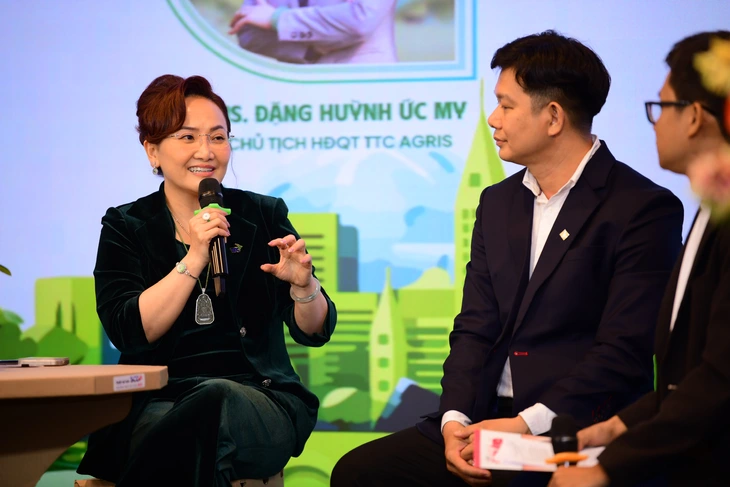
Ms. Dang Huynh Uc My, Chairwoman of TTC AgriS Board of Directors, shared at the workshop - Photo: QUANG DINH
With 72% of consumers willing to pay more for environmentally friendly products, but still influenced by price, businesses need a long-term strategy to balance costs and sustainable value.
Experts and businesses sent such messages at the workshop "Green products and services - orders from users" organized by Tuoi Tre newspaper in coordination with other units on the afternoon of March 27.
Invest properly from the beginning to optimize costs
Ms. Dang Huynh Uc My - Chairman of the Board of Directors of TTC AgriS - stated that Vietnamese agriculture can completely transform towards green if there is good control in farming activities and technology application. Proper investment from the beginning not only helps to increase product value but also optimizes costs in later stages, creating sustainable competitive advantages for businesses.
"The nature of agriculture is green, but the current communication method sometimes does not reflect the actual operation. In foreign countries, pesticides and drugs are still widely used, but they are applied appropriately at each specific time of the crop, following the correct process, dosage and farming standards. Thanks to that, the output products are still guaranteed to be safe," Ms. My shared.
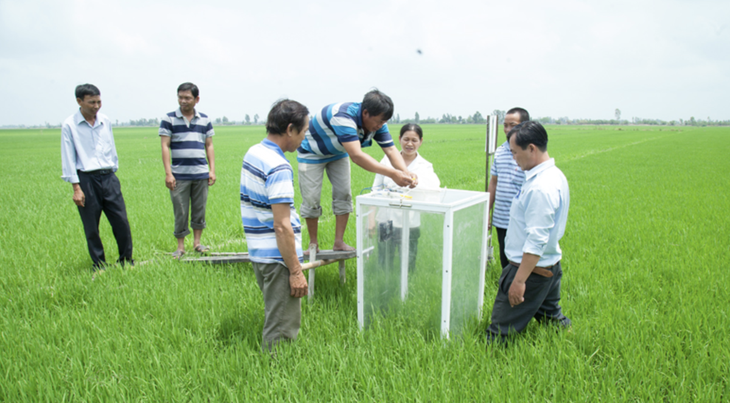
Farmers in Can Tho measure greenhouse gas emissions in their rice fields with the help of local agricultural experts - Photo: World Bank
According to Ms. My, Vietnamese agriculture can completely shift to a green direction, in which the core factor is to control farmers' farming activities well and apply technology. When investing properly from the beginning, the value of the product will increase and production costs in the later stages will be significantly reduced.
Ms. My emphasized that if businesses only focus on cutting input costs, they may face increased output costs, which is not a sustainable strategy. Applying technology to agriculture is an inevitable trend, because only technology can help measure and prove the green farming process, create transparency for consumers and increase product value.
"If the input materials do not meet the standards, the next products in the supply chain will face more challenges. Realizing our important role in the agricultural value chain, we put pressure on ourselves to ensure clean and green production, accompanying farmers in sustainable development," Ms. My affirmed.
Recycled packaging "overcomes difficulties" towards sustainable development

Mr. Vo Dinh Trung - Deputy General Director of the Center for Improvement, Innovation and Sustainability - representative of SCGP, packaging industry of SCG Group - Photo: QUANG DINH
Mr. Vo Dinh Trung - Deputy General Director of the Center for Innovation, Innovation and Sustainability - representative of SCGP, packaging industry of SCG Group - said that SCG Group's packaging business has committed to sustainable growth and development through the ESG 4+ strategy, green development, reducing inequality, promoting cooperation and transparency in operations.
With over 30 years of experience in the packaging industry, SCG has implemented many practical solutions from within the factory to the external supply chain. One of the notable initiatives is the use of biomass fuel, which helps save 30-40% of total fuel consumption. In addition, SCG also invests heavily in renewable energy.
In 2021, an SCG factory installed a rooftop solar power system, helping to reduce about 9,300 tons of CO2 / year and save 13 million kWh of electricity/year. In 2023, a factory in Binh Duong also installed rooftop solar power, helping to reduce 2,700 million kWh of electricity/year, equivalent to growing 35,900 trees in 10 years.
In addition, SCG optimizes operations by using hydraulic machines, solar lighting systems, and researching and developing production technologies that reduce plastic use, typically reducing the production of mineral water bottle caps to only 1.7g.
However, businesses still face many challenges, especially the cost of recycled materials. "The cost of raw materials is a big challenge. Currently, recycled materials can be 20-30% higher than conventional materials. Many times, we have to import from Taiwan for production. In Vietnam, businesses also face difficulties in collecting and processing recycled materials," said Mr. Vo Dinh Trung.
Ms. Tran Thi Ut - lecturer at Hoa Sen University - also said that the market's acceptance level depends a lot on price.
According to Ms. Ut, the green consumption trend poses a problem for manufacturers: how to help consumers clearly see the "green" nature of products, thereby promoting practical action. One of the important solutions is the application of technology. Not only does it help to make product information transparent, technology can also help reduce input costs, thereby creating green products at more competitive prices.
However, the bright spot is that the market has shifted. Awareness and perception have been formed, but to turn them into action requires effort not only from consumers but also from manufacturers. Technology is the key to shortening this gap, creating conditions for green products to reach a wider market.

Associate Professor Dr. Tran Thi Ut, lecturer at Hoa Sen University, gave her opinion at the workshop - Photo: QUANG DINH
Agreeing with this view, Dr. Duong Van Thinh - Green Leadership Community (GLC) advisor, lecturer at the Faculty of Information Systems, University of Economics and Law, Ho Chi Minh City National University - said that although many factories have a clear green roadmap, the implementation time often lasts from 15 to 20 years, even the fastest takes 5 to 10 years.
The biggest challenge today is the gap between awareness and action. Consumers are increasingly interested in green products, businesses are also conscious of the change, but barriers still exist in input costs and product prices.
Technology is seen as a key factor in bridging this gap, helping to make supply chains transparent, optimize production processes and reduce costs, thereby promoting practical actions in sustainable consumption and production.
Consumers are very open to green consumption
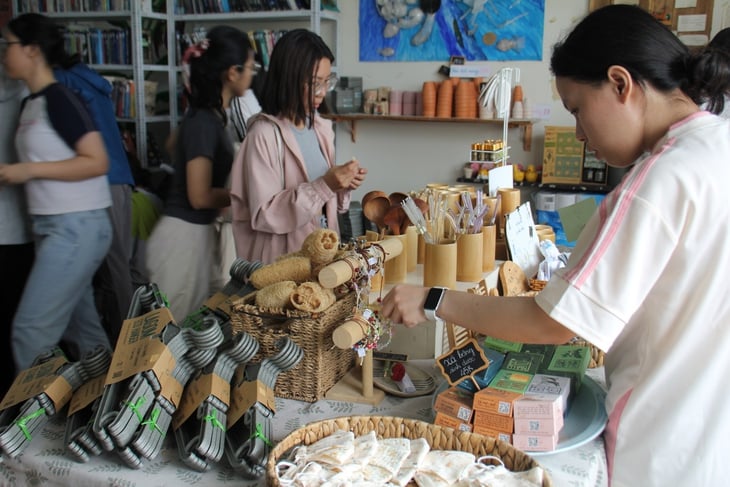
Customers learn about environmentally friendly products such as bio-based soaps, recycled hangers, etc. - Photo: BAO TRAN
Mr. Huynh Thanh Tuan - Director of Quality Management, Ho Chi Minh City Union of Trading Cooperatives (Saigon Co.op) - confirmed the shopping trend at this system.
Mr. Tuan said: "With more than 35 years of operation in the retail sector, the supermarket chain has implemented many specific programs and green consumption campaigns and has seen the trend of sustainable consumption becoming increasingly clear."
According to Mr. Tuan, through many campaigns and programs, the company has realized that consumers have a better understanding of green products and prioritize choosing environmentally friendly products. In addition, Saigon Co.op has also implemented its own programs to help suppliers raise awareness and knowledge about sustainable production.
Regarding measuring consumer affordability, Saigon Co.op has conducted research and surveys showing that when consumers are willing to pay more for green products, they tend to choose reputable businesses and points of sale, where there is a strict control process.
However, there are still cases where customers doubt the transparency of products, not only with green goods but also with many other products. This requires distributors to have appropriate solutions to strengthen consumer confidence. "Distributors must clearly communicate the product quality control process, helping customers understand and feel more secure when choosing to buy products," said Mr. Huynh Thanh Tuan.

Mr. Huynh Thanh Tuan - Director of Quality Management Saigon Co.op - Photo: QUANG DINH
Waste classification at source: still a gap between awareness and action
Mr. Vu Van Huy Hoang - Director of Strategy and Digital Transformation at Vinasoy - believes that plastic still exists because of the value it brings. The problem is not in completely eliminating plastic but in using it responsibly and classifying and disposing of it properly.
"With the boom in e-commerce, the amount of plastic and nylon packaging used in delivery is increasing, posing challenges in terms of communication to raise awareness, collection and recycling," Mr. Hoang raised the issue.
According to Ms. Chu Thi Kim Thanh - Operations Director of PRO Vietnam Packaging Recycling Joint Stock Company, plastic is still an essential part of modern life. Therefore, instead of eliminating it, it is important to manage it well, especially sorting waste at the source. She emphasized the role of the media in raising public awareness of this issue.
Ms. Thanh believes that Japan has effectively managed plastic waste thanks to its strict source-sorting policies. She even believes that education about source-sorting should be included in the civic education program so that children can be taught about waste sorting from an early age. Once children understand the importance of waste sorting, they will be able to remind their parents to do it better.
"This is an issue that requires the cooperation of the whole society," Ms. Thanh emphasized.
She also pointed out that Vietnamese people have actually classified waste for a long time, according to the Vietnam Waste Recycling Association, according to the criteria of "saleable and unsaleable". This raises the issue of creating economic value from recycled waste to encourage people to classify it at the source.
Currently, one of the major difficulties is that waste at the source is not yet properly classified. In addition, Ms. Thanh believes that the State needs to have appropriate collection policies to reduce imports, thereby creating incentives to promote domestic collection.
Similarly, Ms. Nguyen Thi Phuong Ha - Vice President of Vietnam Packaging Recycling Alliance, General Director of Annam Group - said that one of the major barriers is the gap between people's awareness and action.
"When asked, many people are willing to pay for green products, but in reality their actions are not really 'green'. Currently, only 17% of households classify waste at home, which makes it very difficult for recyclers to collect raw materials," she said.
She said that in the coming time, PRO Vietnam will organize many workshops to raise public awareness and promote waste classification at source. This is especially important in the context that the current waste collection force is mainly freelance workers, and there is no official system to support the classification work.
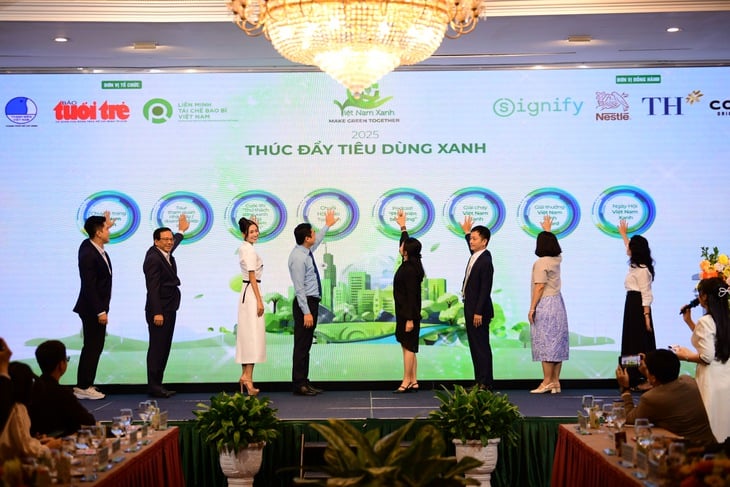
Experts and businesses officially launched the promotion of green consumption after the workshop - Photo: QUANG DINH
Technology helps control "real" green and "fake" green products
Dr. Duong Van Thinh - Green Leadership Community (GLC) advisor, lecturer of information systems department, University of Economics and Law, Vietnam National University, Ho Chi Minh City - said that Europe is currently strongly encouraging the use of green products. However, when the authorities checked, up to 2/3 of the dishonest labels came from Asia.
According to Mr. Thinh, in Europe, the transparency in applying technology to production is very high. Technology is thoroughly deployed from production to distribution, helping to verify and accurately detect products with honest or substandard labels.
"Actual data in 2023 also shows that the trend of consuming green products is increasing. This affirms the important role of technology in controlling, making transparent and improving the standards of green products," Mr. Thinh emphasized.
Mr. Le Anh, Director of Sustainable Development, Duy Tan Recycling Plastic Joint Stock Company (Duy Tan Recycling - DTR):
Vietnam has "fallen" 3 places as the country that discharges the most plastic waste in the world.
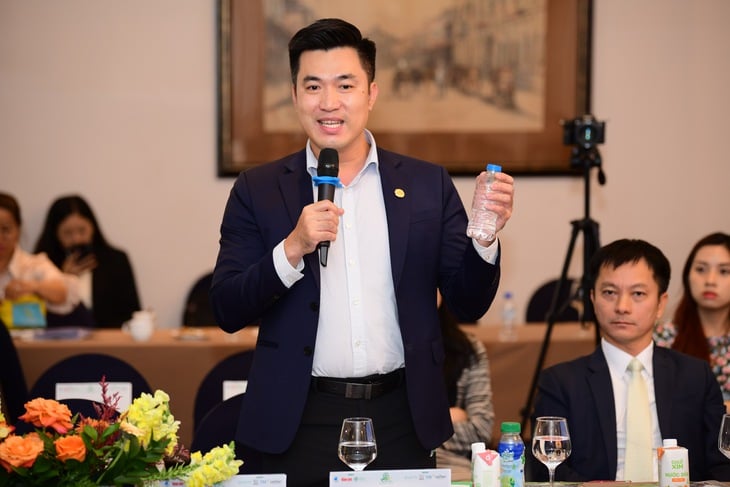
Mr. Le Anh - Director of Sustainable Development Duy Tan Recycling - Photo: QUANG DINH
The company started operating in 2019, when the concept of green development and sustainable economy was still quite new in Vietnam. At that time, the market had not really accepted recycled plastic, making these products almost unconsumable domestically.
However, in recent years, the market has seen positive changes. More and more recycled plastic bottles are appearing on supermarket shelves, reflecting changes in consumer awareness and behavior. In particular, businesses in the fast-moving consumer goods (FMCG) industry are playing an important role in promoting the use of recycled plastic.
Not only recognizing the changes in the market, Duy Tan Recycling has also made great strides in production. Currently, the company collects and recycles about 200 tons of plastic every day, equivalent to 15 million plastic bottles. If these bottles were stacked together, the total length could reach 965km, equivalent to the distance from Ho Chi Minh City to Hue.
In addition to the efforts of businesses, government policies also play an important role in the development of the recycling industry. Vietnam has begun to apply the Extended Producer Responsibility (EPR) regulation, requiring businesses to achieve a certain collection and recycling rate for plastic packaging. This is considered a great driving force for the recycling industry to develop more strongly.
Promoting a circular economy model not only benefits businesses but also helps improve the situation of plastic waste pollution. Previously, Vietnam was among the top 5 countries that discharged the most plastic waste in the world, but now it has "fallen" to 8th place. However, there are still many challenges that need to be solved to manage plastic more effectively.
Ms. Nguyen Pham Kim Ngan, representative of Nepa Cooperation Institute:
Green development requires long-term commitment
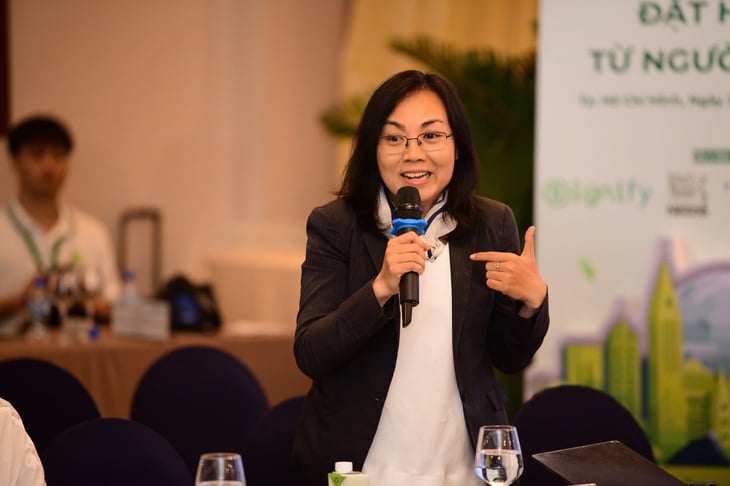
Ms. Nguyen Pham Kim Ngan, representative of Nepa Cooperation Institute - Photo: QUANG DINH
In many countries around the world, regulations on sustainable development are increasingly stringent, with participation and action not only from the Government but also from the business community and scientists.
However, the green development roadmap in Vietnam still faces major challenges, especially the lack of investment resources.
This requires business leaders to make a strong commitment, build a clear roadmap, and publicly disclose information and transparent data to strengthen credibility.
The workshop "Green products and services - orders from users" was organized by Tuoi Tre newspaper in collaboration with the Vietnam Packaging Recycling Alliance (PRO VN), the Ho Chi Minh City Youth Union and accompanying units at the Majestic Hotel (Ho Chi Minh City).
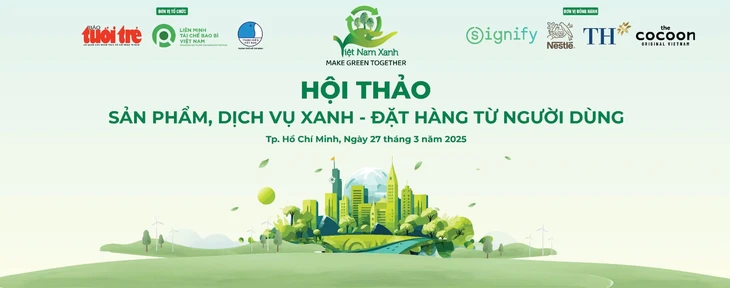
Source: https://tuoitre.vn/cong-nghe-giup-tieu-dung-xanh-co-the-di-duong-dai-20250327165725871.htm


![[Photo] Myanmar's capital in disarray after the great earthquake](https://vstatic.vietnam.vn/vietnam/resource/IMAGE/2025/4/1/7719e43b61ba40f3ac17f5c3c1f03720)

![[Photo] General Secretary To Lam receives King Philippe of Belgium](https://vstatic.vietnam.vn/vietnam/resource/IMAGE/2025/4/1/e5963137a0c9428dabb93bdb34b86d7c)

![[Photo] President Luong Cuong and King Philippe of Belgium visit Thang Long Imperial Citadel](https://vstatic.vietnam.vn/vietnam/resource/IMAGE/2025/4/1/cb080a6652f84a1291edc3d2ee50f631)
![[Photo] Prime Minister Pham Minh Chinh meets with King Philippe of Belgium](https://vstatic.vietnam.vn/vietnam/resource/IMAGE/2025/4/1/be2f9ad3b17843b9b8f8dee6f2d227e7)




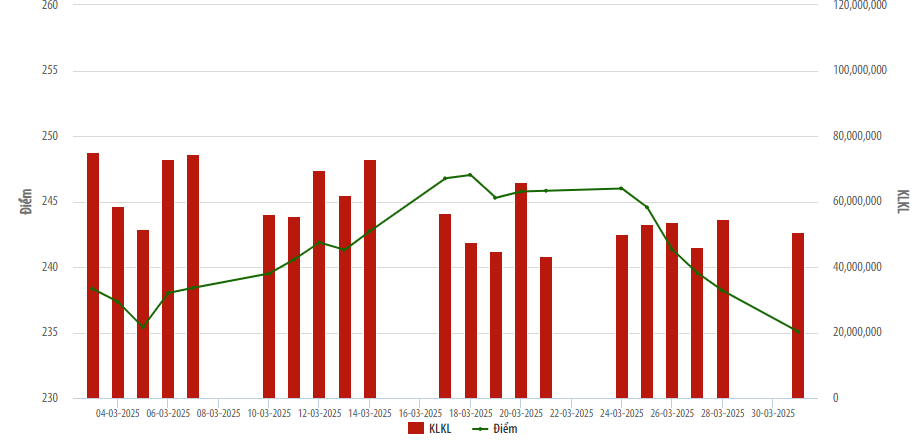
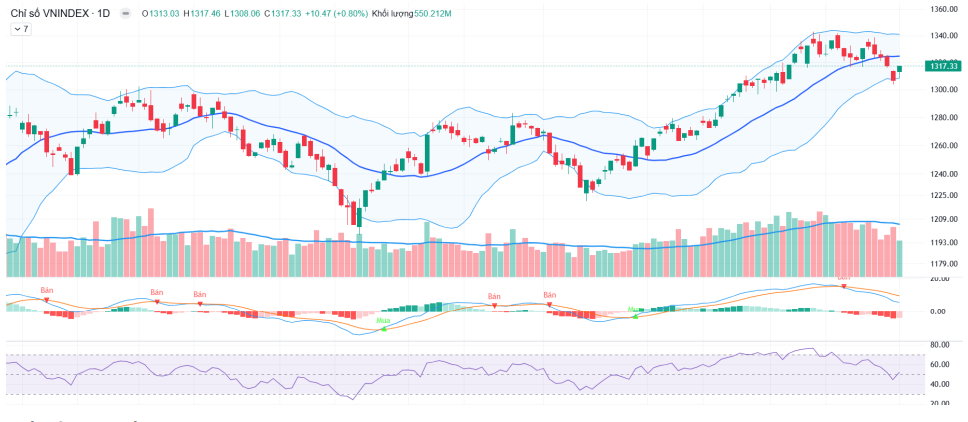



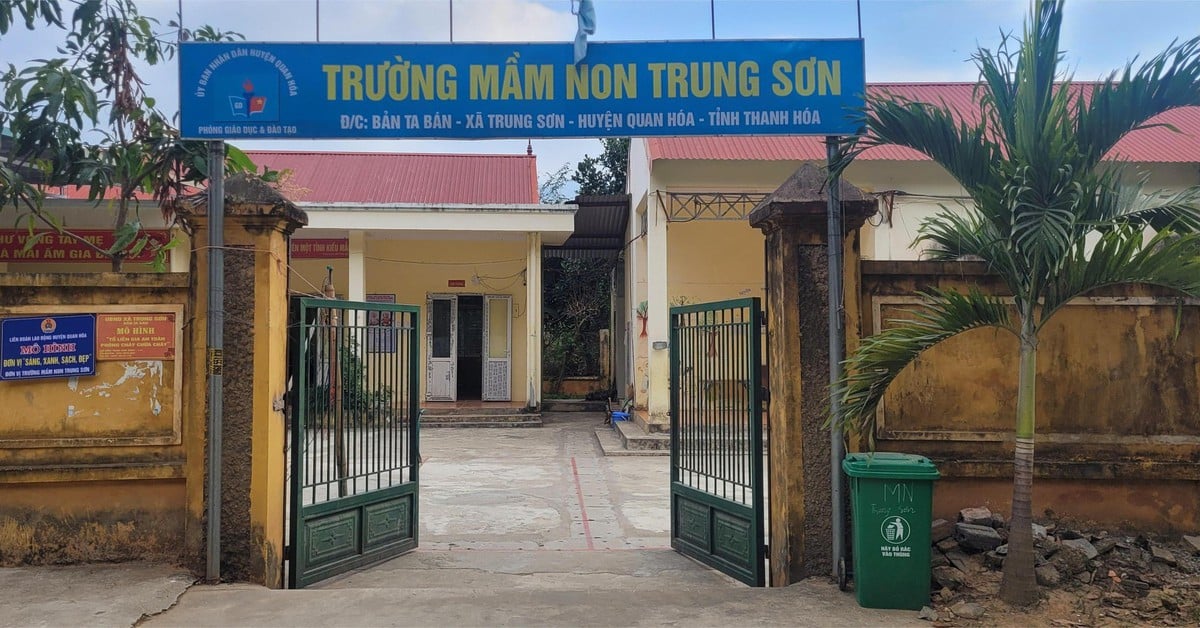

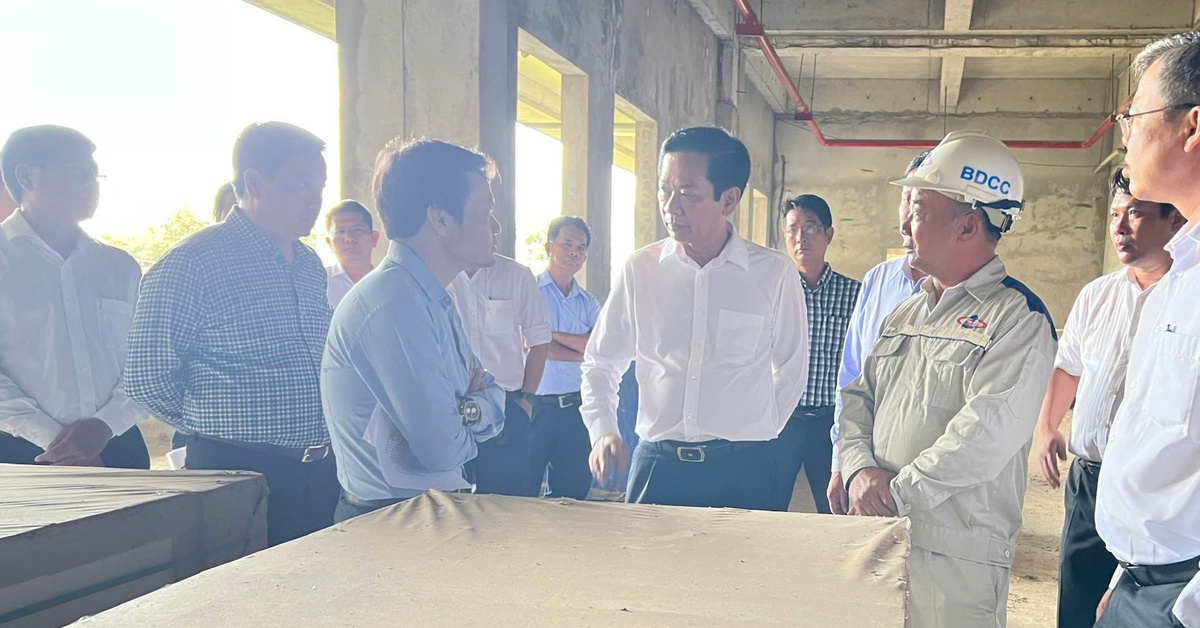




![[Photo] Queen of the Kingdom of Belgium and the wife of President Luong Cuong visit Uncle Ho's Stilt House](https://vstatic.vietnam.vn/vietnam/resource/IMAGE/2025/4/1/9752eee556e54ac481c172c1130520cd)






























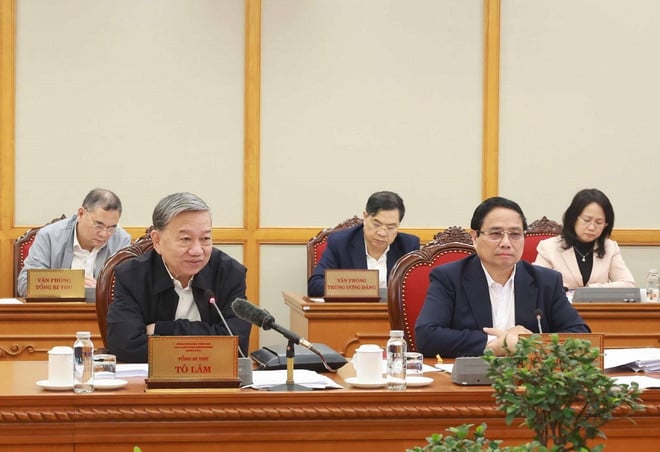







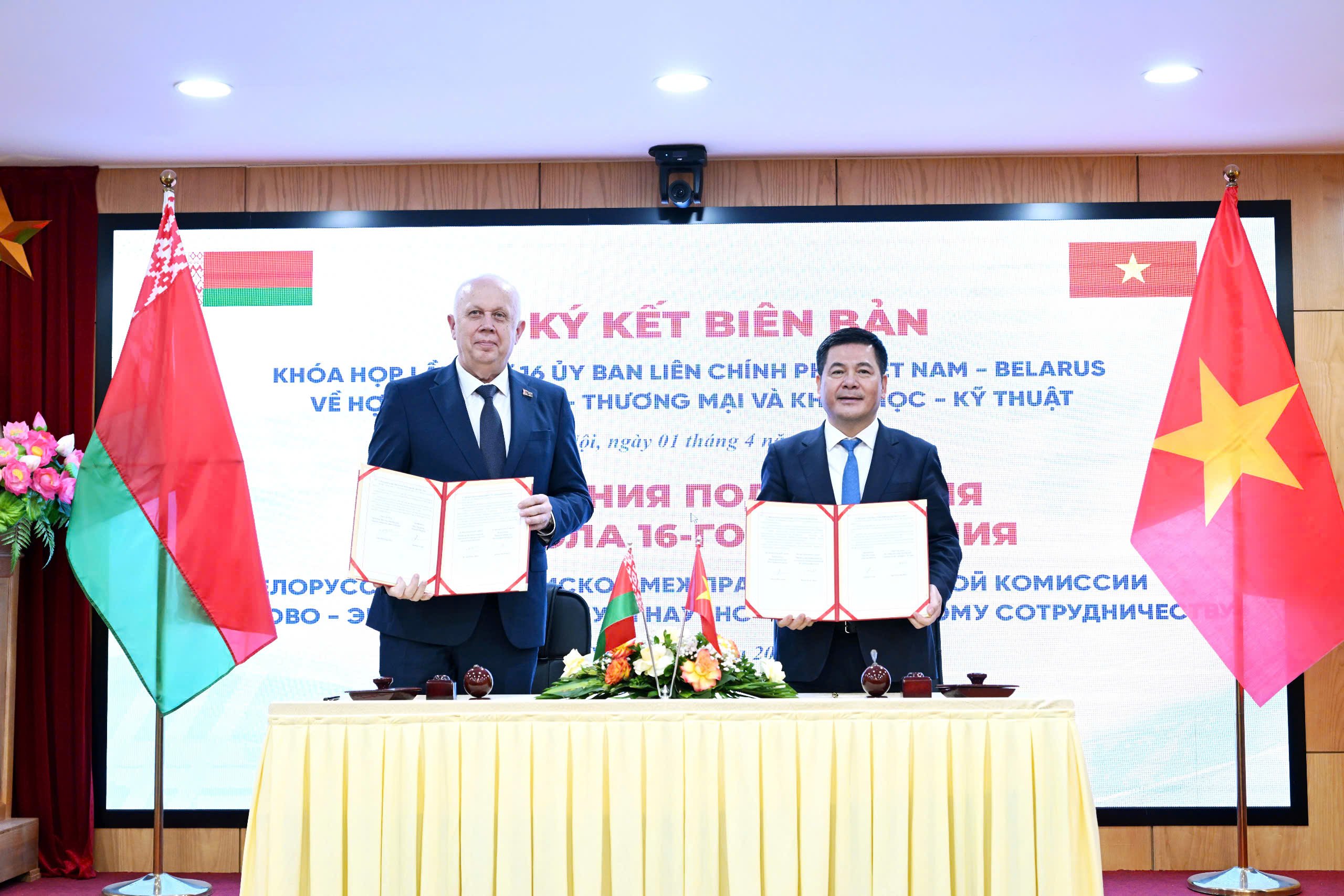



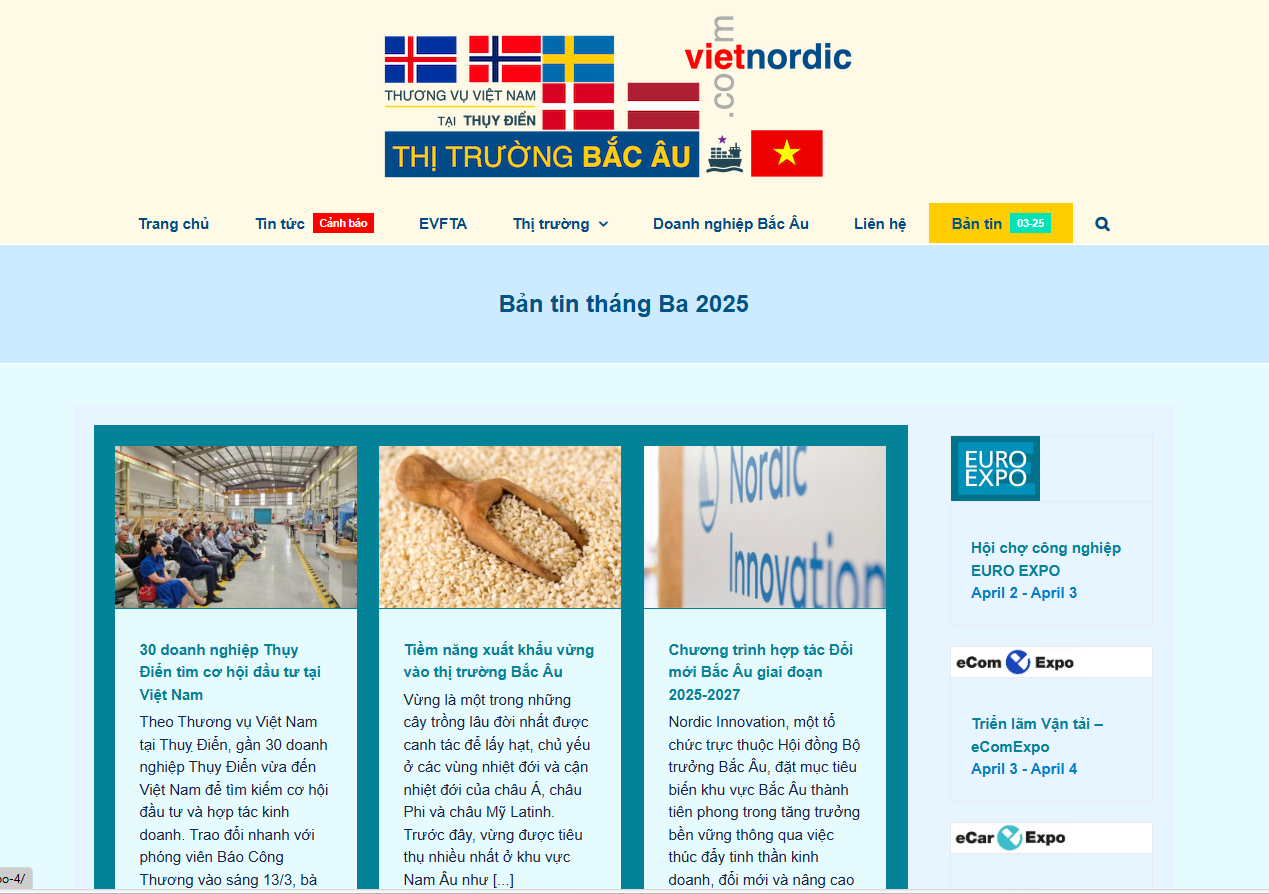
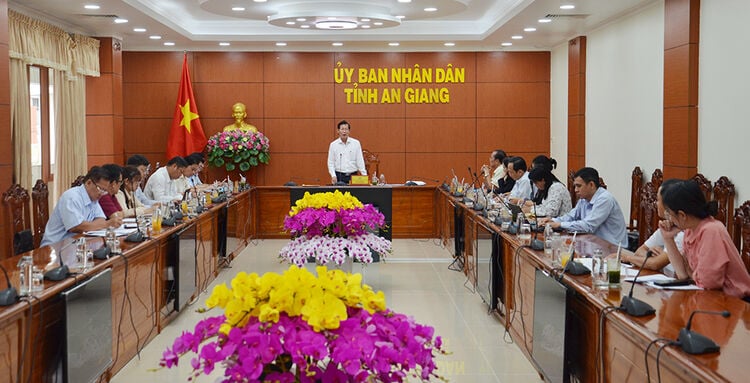

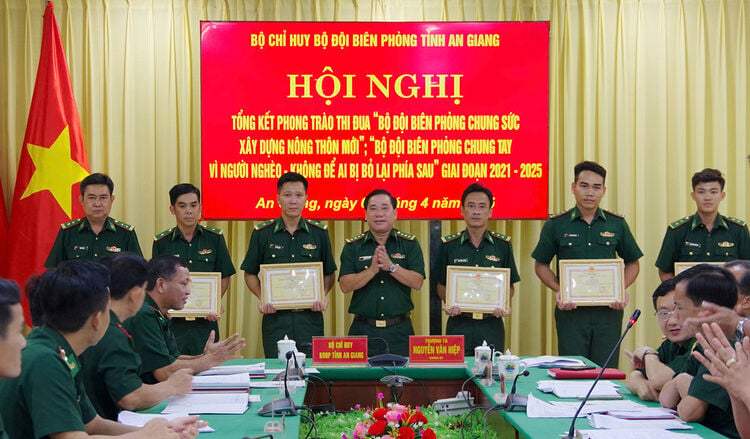
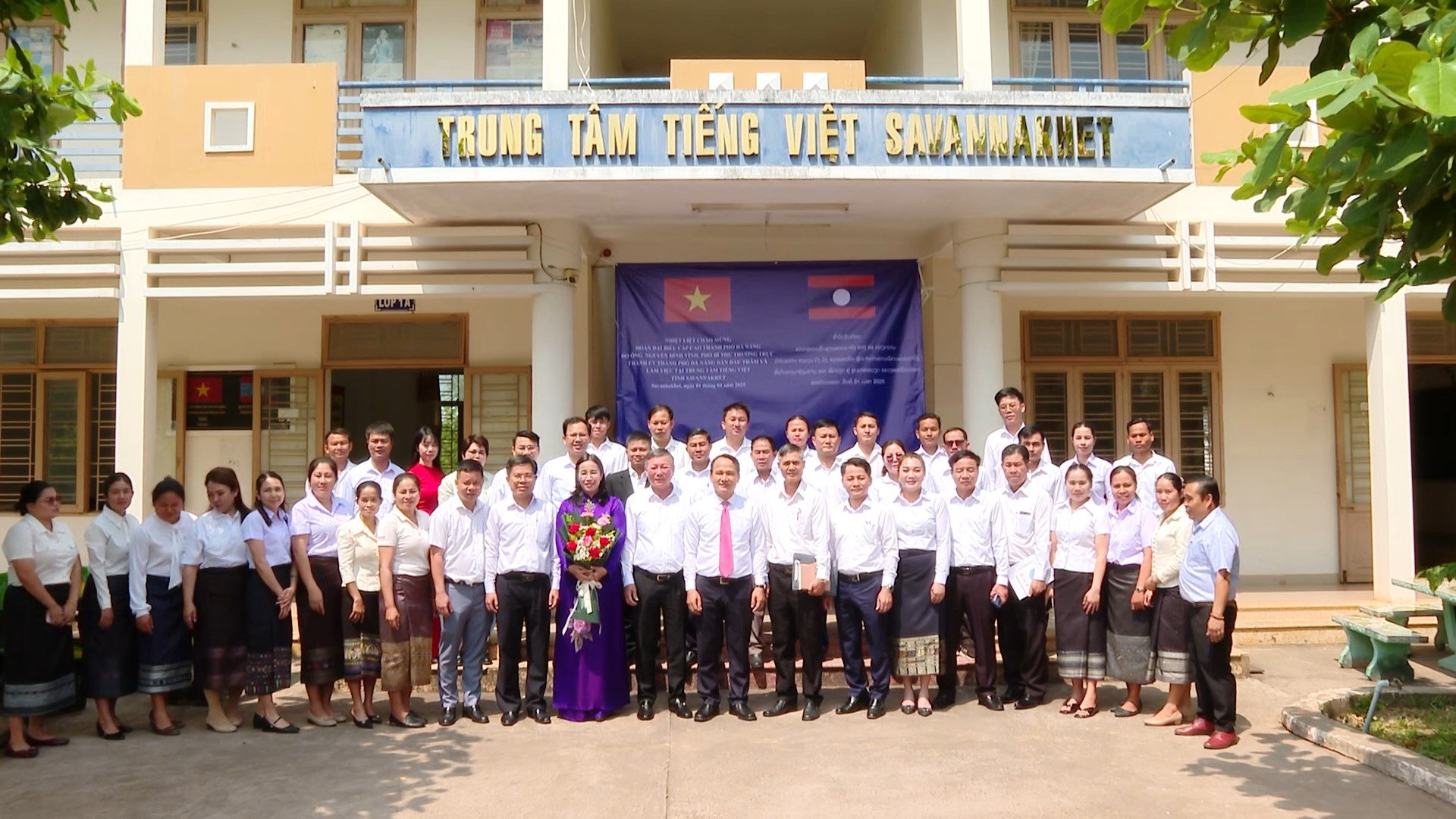

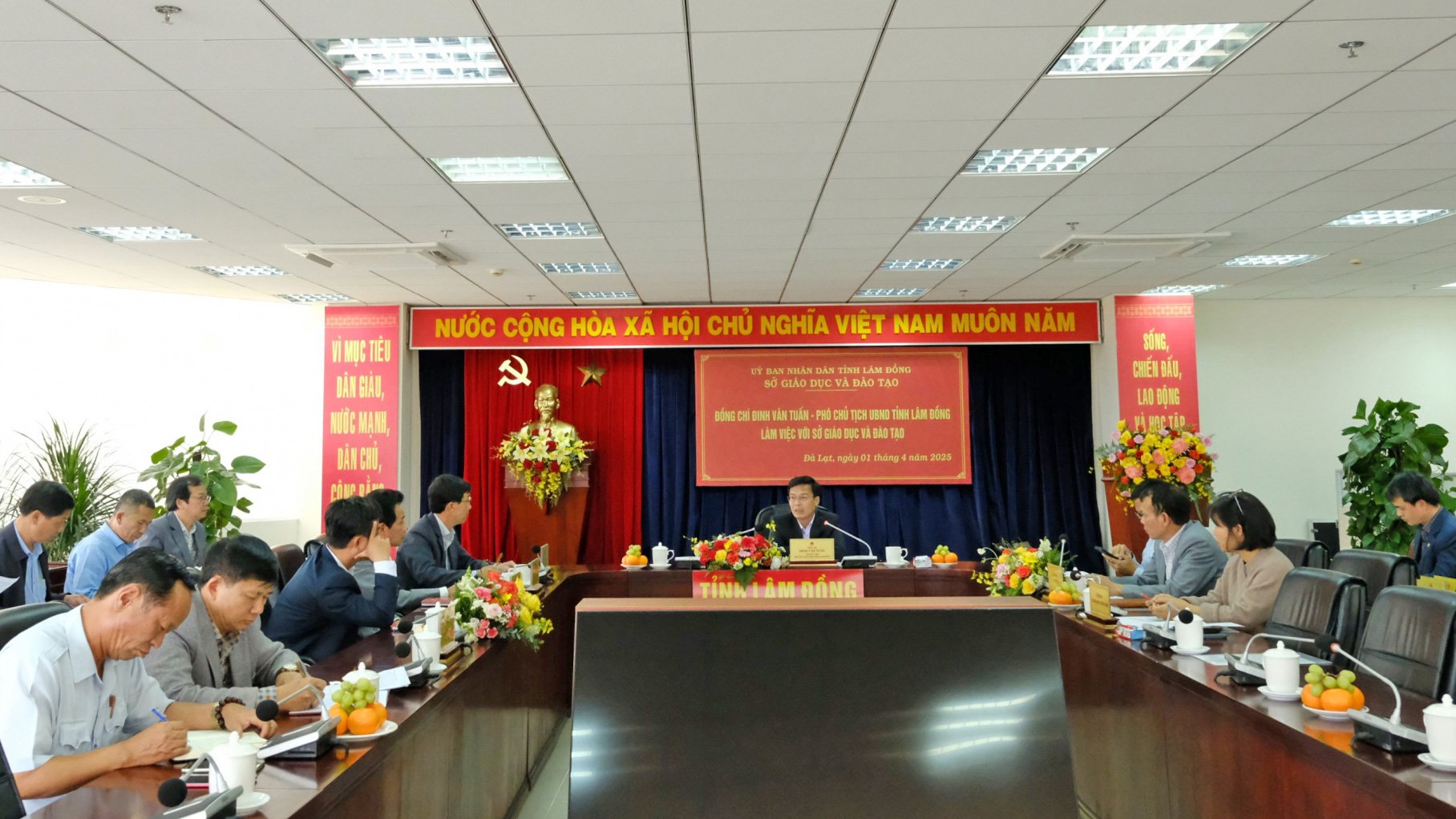

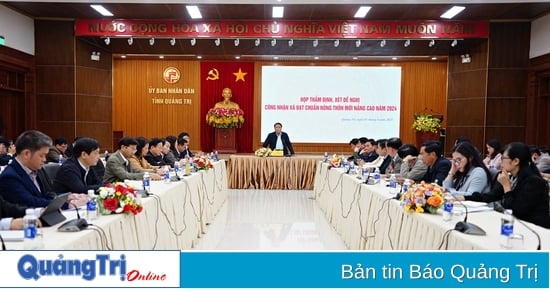













Comment (0)